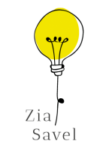When you recognise it is time to look for a new role, the starting point is usually considered to be the CV. I would challenge this idea, by really seeking clarity on:
- What you want from your next role?
- What type of companies are you interested in?
- What is driving you to seek a new role now?
- What do you / don’t you want in the new role?
- What are the peripheral aspects of the new role you seek? Salary, benefits, commute time, flexibility…
With the clarity of what you want next, will create a more compelling CV with clarity of purpose and coherence.
There are beautiful CV templates available online, which is a great start in making a CV eye catching. The content needs to maintain the recruiter and hiring managers attention, so the content needs to read well and be accessible.
Personal Information
Most CV start with personal information. Include your name and contact details. There is no need to include your address, as this opens an opportunity for bias to influence the reader, i.e. ‘that would be too long a commute here’. To prevent any bias, keep to the information that is required to make contact with you.
Personal Statement
While the personal statement usually is one of the first areas the reader would review, it should be the last section you write. The reason being the personal statement should reflect all of the content you have shared throughout your CV. It should share the highlights of who you are, what you bring and what you will bring to the role.
Experience
Clients often share CVs with me that consist of a list of tasks. A list of what has been included in their role, but no mention of the personal approach in the CV at all. A list of tasks are empty. It lacks a great opportunity to show YOU in your CV.
To ensure your CV shares relevant information about your skills and experience, firstly capture the Company Name, date you worked at that company, then the Role Title and the dates you worked in that role.
Company Name, Dates From – To
Role Title, Dates From – To
Create a small paragraph that answers the following questions:
- What is the purpose of the current role?
In one sentence, how would you describe the purpose of the current role? What does the company pay you to do?
- What is the size and scale?
This sentence should include some measures, i.e. headcount you were responsible for, geographic regions, revenue, product lines etc.
- Who are the key stakeholders?
Stakeholders should include, who are impacted by your role. This may include, the Shareholders, Exec Team, Direct Reports, Regulators, Industry Bodies, Suppliers, Customers etc.
In total the answers to these questions should be no more than 3-4 sentences.
To highlight your experience within this role, capture 3-4 Key Achievements in the role.
The Key Achievements need to show off your capabilities, skills and experience. Chose achievements that you will not reference at other points in your CV. Which experience stand out in this role?
Name the Key Achievement i.e., Managed Office Move, Acquisition Due Diligence, Process Improvement Project etc.
Write a small paragraph about the Key Achievement.
Include:
- What did you do?
- What went well?
- Who was involved?
- Results
- Reflections, if you were to do it again, how would you improve it?
Repeat this structure for roles that go up to 10 years. Roles from 10 years ago or more, simply capture the Company Name, Role Title and Dates. On occasions clients state they feel a historic role is valid to share more information about, should the client want to move back into a sector from their career history.
Education
Capture your educational achievements in a simple format, i.e.:
BA (Hons) Educational Research, Date
Dissertation – Lifelong Learning – Choice or Compulsion
Training
This is your choice. Some sectors like to see reference to Continuing Professional Development and this can include certifications which are externally recognised or inhouse programmes, which the skills will be relevant in a new role.
Hobbies
There is no need to share any additional information, as this is irrelevant to the role you are applying to.
References
Available on request is sufficient. Should references be required, a future employer will ask specifically for the details. This also provides an opportunity for the candidate to seek permission from the referee in advance.
Top Tips
Top Tips
- Master CV
Create a master CV with all roles and detail in one document. Refine the master CV to reflect the role you are applying for.
- Tailor your CV
Check the Role Profile for the skills sought and ensure your CV refers to the skills sought.
- Refine your Job Search
Get clear about which roles you are really interested in. Make fewer higher quality applications to roles and companies you really want to work in.
- Record Keeping
Keep a record of your applications. Learn from the experience and refine your approach as you apply.
- Formatting
Ensure to do a final check of consistent font, size, spacing and spelling.
If this blog has been useful, please take a look at the other blogs in the series which will be shared over the coming weeks. If you are ready for 1:1 support contact Zia zia@ziasavel.com or book into my calendar

